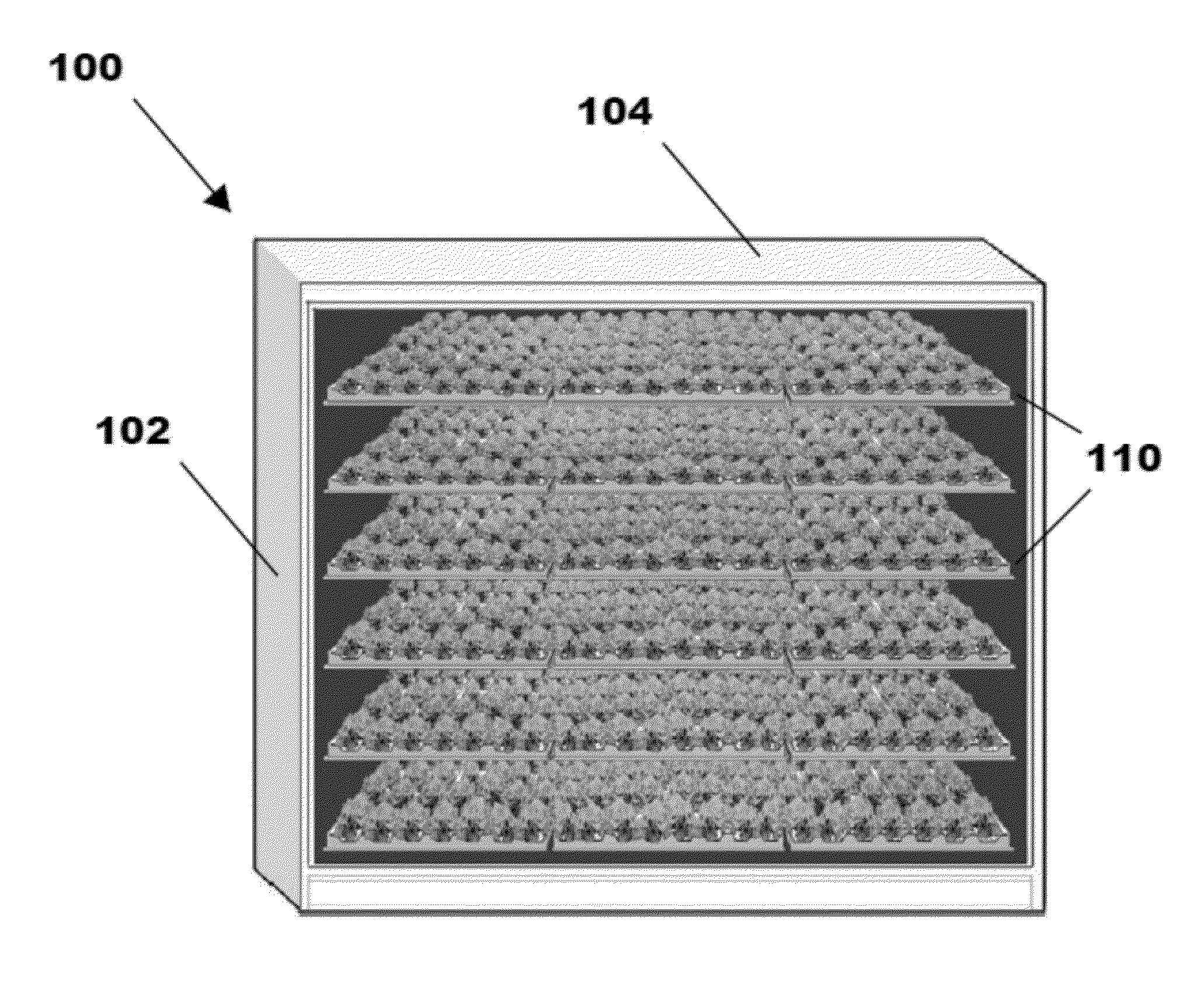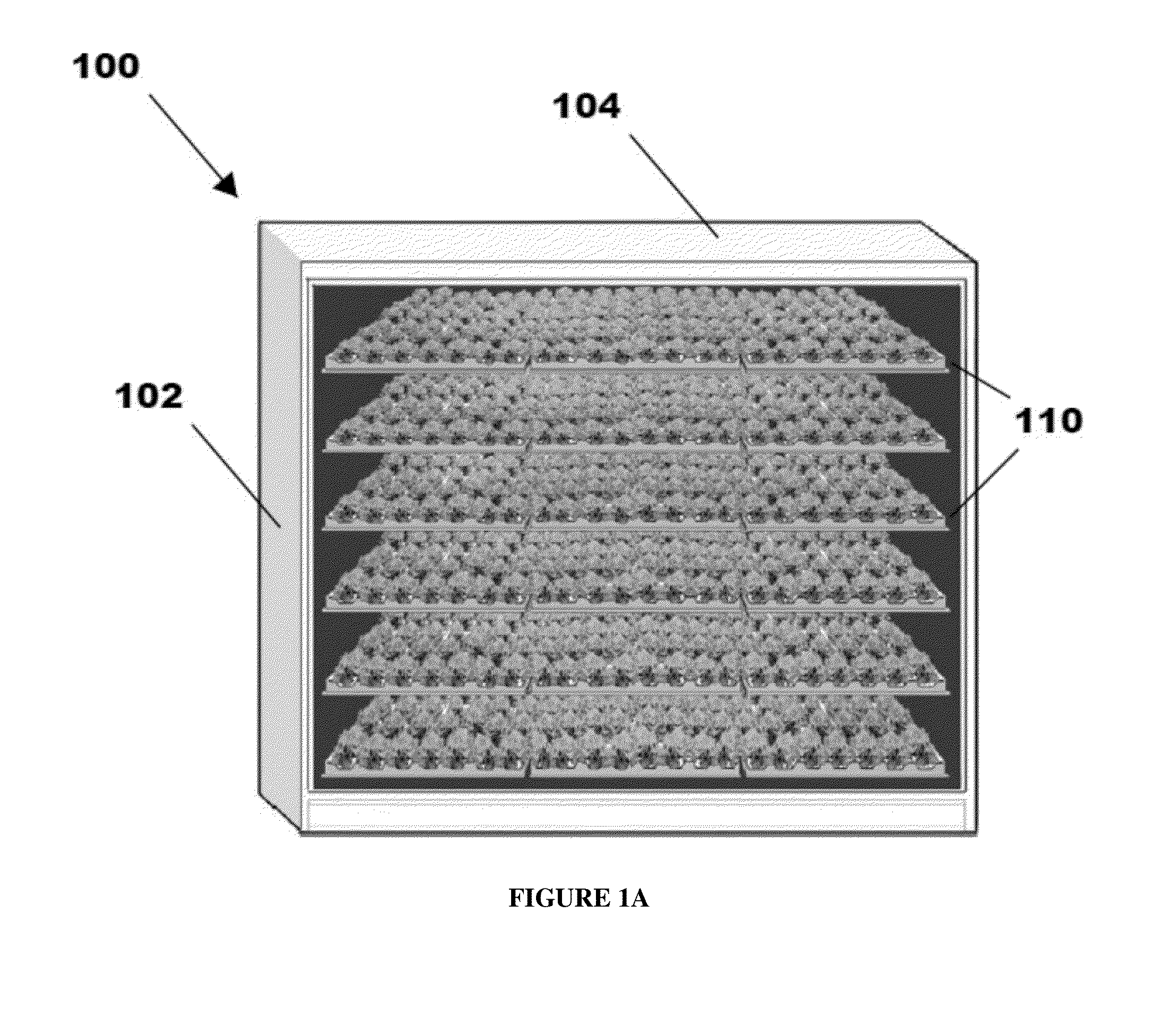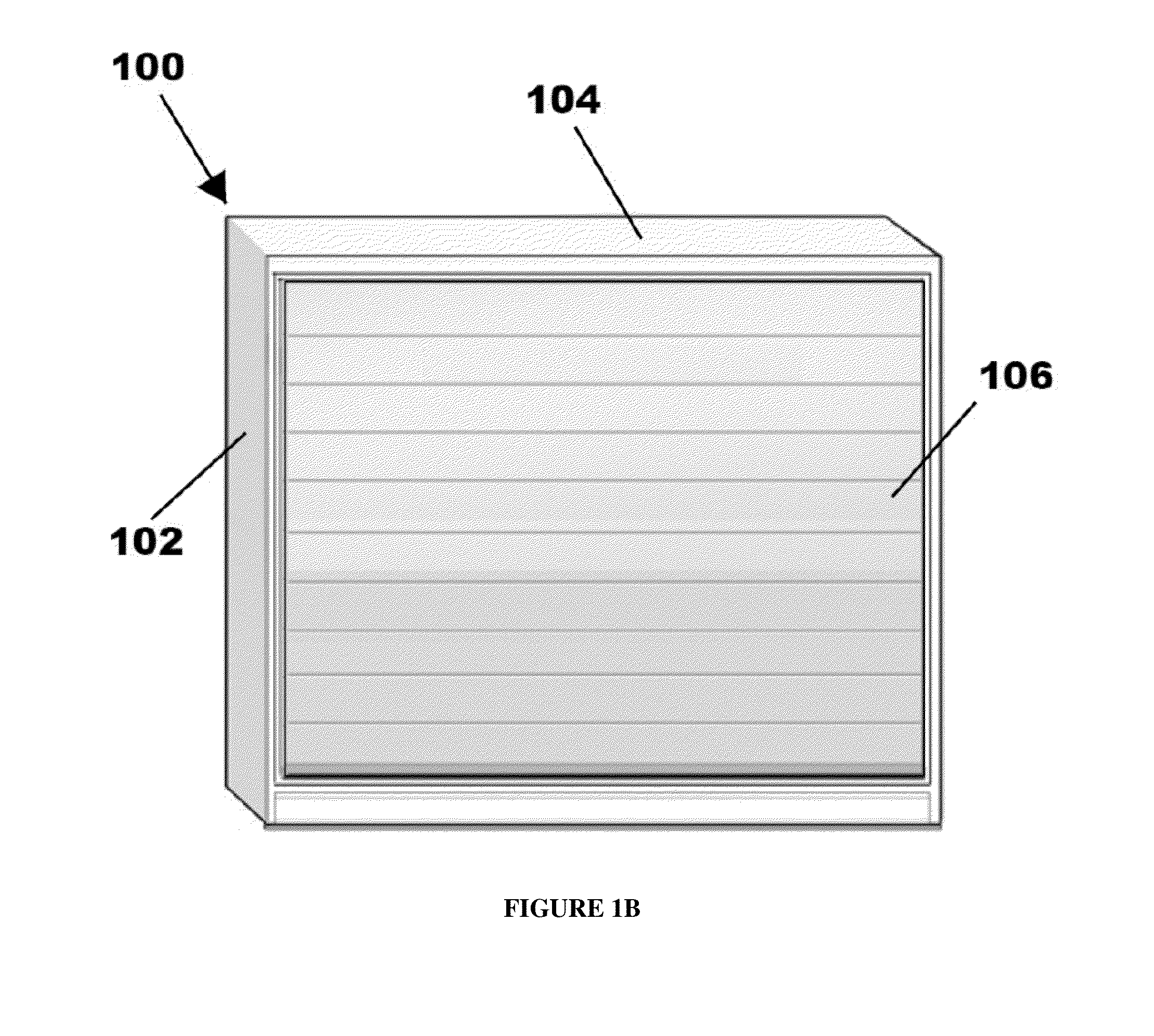Cultivation pod
a technology of plant pods and pods, applied in the field of hydroculture, can solve the problems of limited effect of borlaug's methods, limited efficiency of methods, and inability to translate well, etc., and achieve the effects of improving automation capabilities, reducing the volume needed for harvesting, and increasing the efficiency of resource us
- Summary
- Abstract
- Description
- Claims
- Application Information
AI Technical Summary
Benefits of technology
Problems solved by technology
Method used
Image
Examples
Embodiment Construction
[0114]Described herein are cultivation pods and associated methods of harvesting. The cultivation pods may include one or more attributes designed to reduce the volume needed for harvest, improve automation capabilities, and increase efficient use of resources. The pods may include a platform with a plant carrier and supporting tray, a light distribution system, a liquid nutrient distribution system, and an air distribution system.
[0115]The volume required to produce each plant can be important in space-limited areas. For example, arable land may be scarce or non-existent in densely populated areas. Importing produce can be expensive and can lower the freshness of for-sale produce. Beneficially, the cultivation pods described herein may reduce the volume necessary to grow produce and allow for large-scale plant growth in urban areas. For example, the stackable, compact, and self-contained cultivation pods described herein can be efficiently stored in warehouses
[0116]The pods may red...
PUM
 Login to View More
Login to View More Abstract
Description
Claims
Application Information
 Login to View More
Login to View More - R&D
- Intellectual Property
- Life Sciences
- Materials
- Tech Scout
- Unparalleled Data Quality
- Higher Quality Content
- 60% Fewer Hallucinations
Browse by: Latest US Patents, China's latest patents, Technical Efficacy Thesaurus, Application Domain, Technology Topic, Popular Technical Reports.
© 2025 PatSnap. All rights reserved.Legal|Privacy policy|Modern Slavery Act Transparency Statement|Sitemap|About US| Contact US: help@patsnap.com



